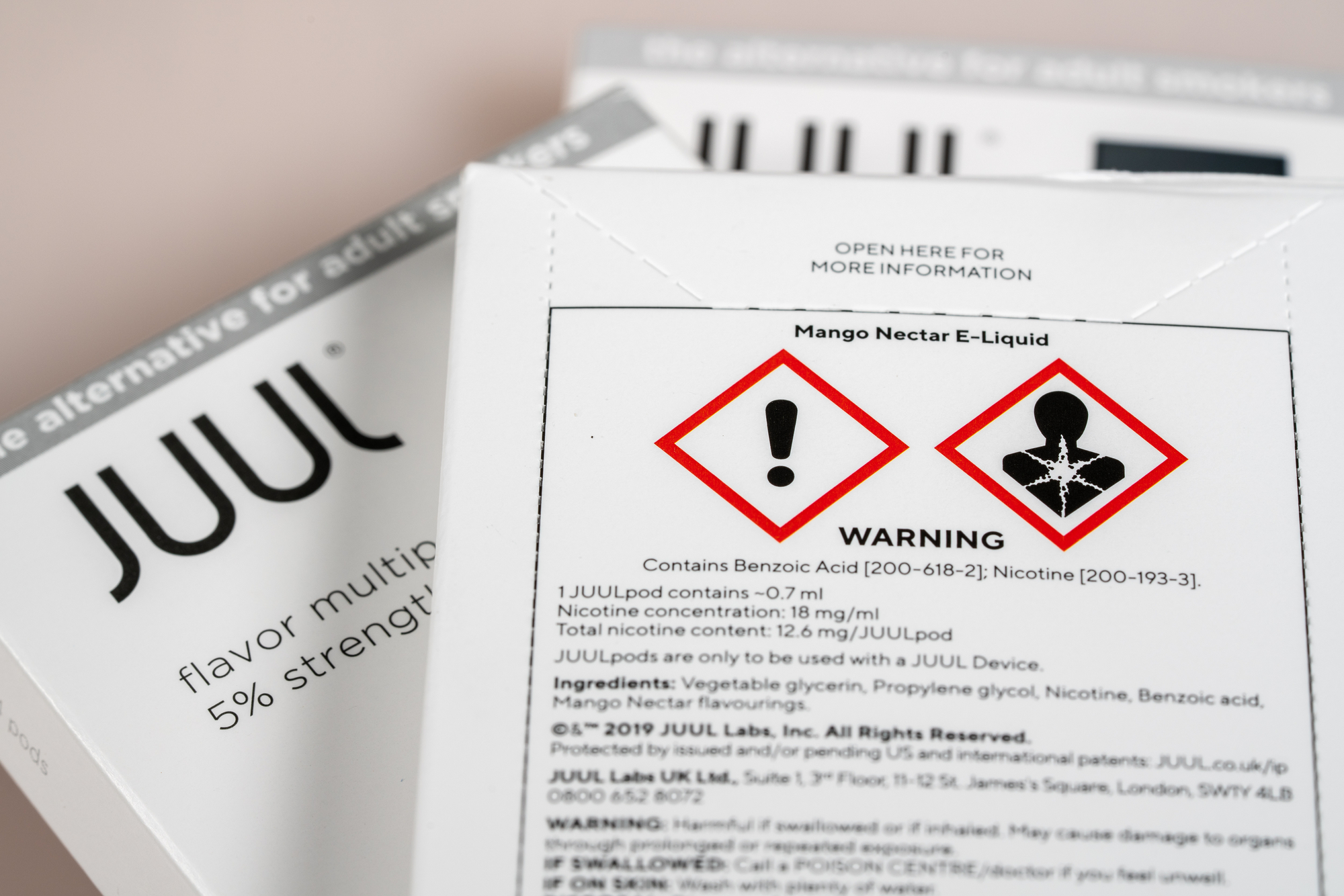Fighting E-Cigarettes: 7 Things Every Parent Needs to Know About Vaping
Fighting E-Cigarettes: 7 Things Every Parent Needs to Know About Vaping
Susan Foster, CSAPC
Assistant Director, Substance Use Prevention Programs
Virginia Johnson, CSAPC
Substance Use Prevention Director
The dangerous health effects of vaping have been making headlines. As prevention specialists, we want to answer some of the commonly asked questions we receive during our #YouthCulture and Drugs Uncovered parent education programs.
What exactly is a vape?
An e-cigarette or “vape” is a mechanical device designed to heat up a liquid. Once heated, the liquid turns into an aerosol that is then inhaled and exhaled. This is referred to as “vaping” because the cloud created by e-cigarettes when exhaled is often mistaken for water vapor. It is important to note that this cloud is not simply water vapor.

If the vaping clouds are not water vapor, what are they?
According to the U.S. Surgeon General, the e-cigarette aerosol not only includes the highly addictive substance nicotine that comes from tobacco, but also includes ultrafine particles of heavy metals such as tin, nickel and lead. The aerosol includes flavorants such as diacetyl, and volatile organic compounds that can be inhaled deeply into the lungs. These ingredients have been linked to cancer, serious respiratory issues, lung disease, heart disease and addiction. The ultrafine aerosol mist that users inhale and exhale exposes the user, bystanders, and the environment to these harmful materials.
How do youths start vaping? Is it addictive?
For adolescents, vaping is often a social experience where the e-cigarettes are passed around and shared. This a common way a young person is introduced to a vape product. The developing adolescent brain is more vulnerable to the effects of nicotine than the adult brain, so there is a greater likelihood of addiction for adolescents.
How often are youths vaping?
According to the Monitoring the Future Survey, about 37% of high school seniors reported using e-cigarettes within the preceding year and about 10 percent report daily use.
Are youths using vapes to get “high?” What are they “high” on?
Vape devices are a mechanism to heat up substance into aerosol form to be inhaled and quickly absorbed into the body. Vape devices and the liquids that are heated inside come in a wide variety of shapes, sizes, and ingredients. Most vapes contain nicotine, and some devices use nicotine salts with a very high concentration of nicotine and a very fast absorption rate. This creates a quick “high” and a very short time before the next craving which further increases the likelihood of addiction. In addition to nicotine, vape devices can also be used as a delivery mechanism for other substances such as THC, CBD, spice, flakka, and even ketamine. There is a real concern that youth may not know exactly what they are vaping or how it will affect their bodies.
What can I do? How do I talk to my child about this?
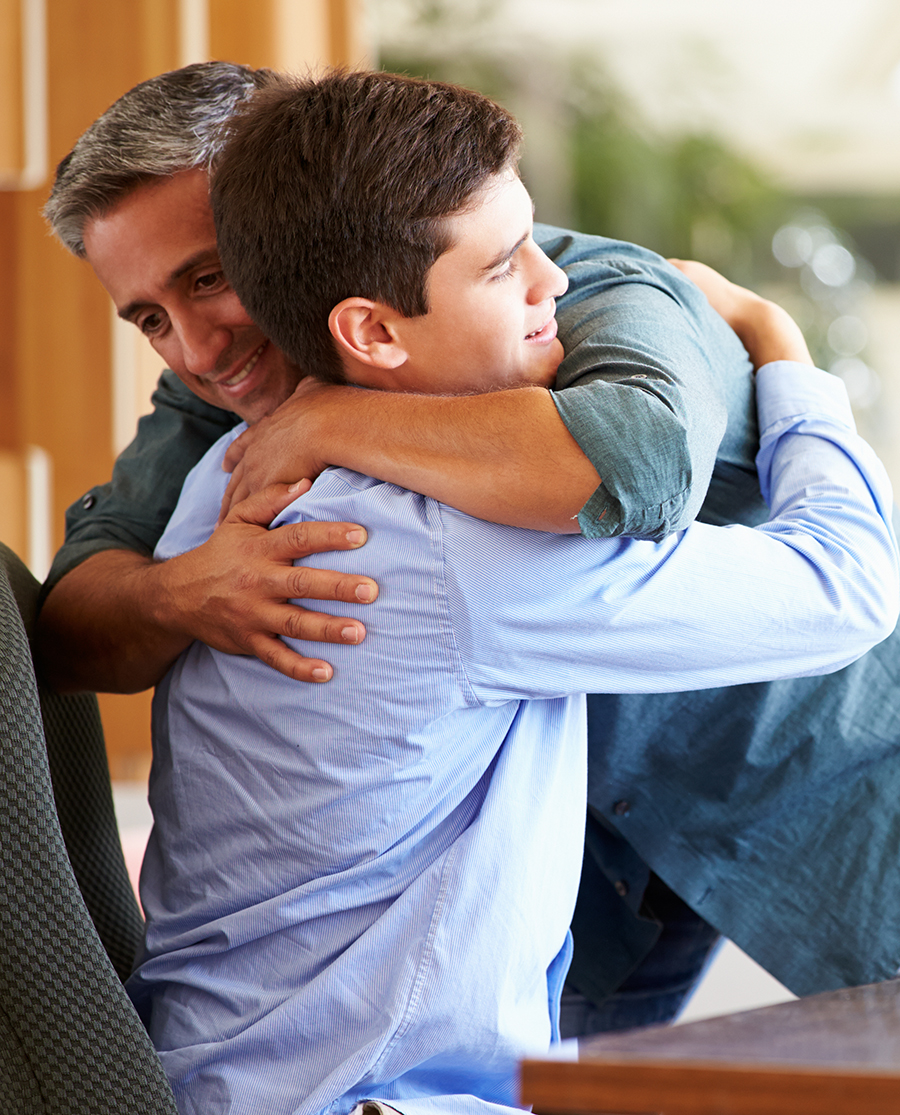
It is important for parents to be informed and to talk to their children. It is never too early to start talking to your child about the dangers of e-cigarettes. If your child is in elementary school, a prevention conversation should focus on what is safe for your body and what is not. During these early conversations, make sure to identify trusted adults your child can go to with more questions. These conversations are meant to be ongoing and increasingly informative. At the Poe Center, we begin talking about addiction and the effects of nicotine on the brain and body in our 4th grade programs.
To help prevent substance use at all ages, we must make sure that children have the skills to resist peer pressure, reduce stress, and increase communication. A great way to do this is to model healthy stress-relieving techniques and to roleplay ways to say “no” to substances with your child. Check out our Refusal Skills handout for more tips. Be proactive and you will reinforce and strengthen the protective factors and reduce the risk factors in your child’s life.
What if my youth is already vaping?
Talking through the risks and dangers of vaping is a great start, but you may also need to discuss strategies for cessation.
- For teens, there is online support available by texting DITCHJUUL to 890-07.
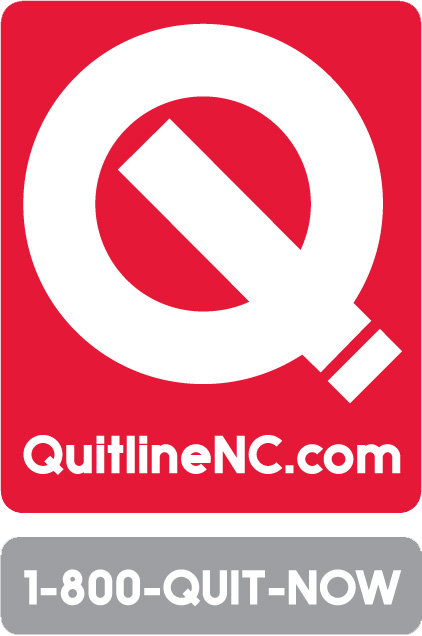
- Check out QuitLineNC.com or 1-800-Quit-Now. QuitlineNC provides resources, tools, and tips for those on the path to quitting including free cessation services and coaching.
- If you are concerned your child may be vaping, we recommend talking to your child’s pediatrician.
- Parents can also contact the Tobacco Treatment Programs at the UNC Department of Family Medicine for additional support, including in-person counseling sessions.
Although we are still learning about the negative health impacts of vaping, please remember that vaping is dangerous. It is especially dangerous to youths since their developing brains are highly susceptible to addiction. There is a lot of misinformation online and in the news, so be sure to use trusted sources when researching vaping.
Above all else, don’t be afraid of having a conversation. Even though they may not act like it, children value their parents’ opinions and want to hear from you. Talk to your child about the consequences of vaping and help them build their skills to make healthy decisions. Need help? Download our Tobacco Resources for Parents and Other Concerned Adults for additional resources, including tips for conversation starters with your child. Be brave, start a conversation, and you will work towards a healthier lifestyle for your child.
Resources:
Tobacco Resources for Parents and Other Concerned Adults
Featured Poe Programs: E-Cigarettes 101 - for Adults
Grade Level: Adults | Program Length: 90 minutes
This program addresses the growing concern of e-cigarettes and youth. Participants will explore adolescent brain development and the effects of e-cigarettes as we cover the latest research. We will also take a look at the risk factors for use, and the protective factors that help prevent use. A discussion on resources and strategies for increasing protective factors with our youth will leave attendees with tools for the next steps.

Vaping 101 - for Youths
Grade Level: 6th - 12th grades | Program Length: 60 minutes
Vaping 101 addresses the growing concern of e-cigarettes and youth. Participants will learn about the addictive nature of nicotine and how addiction impacts the brain and body. Risk factors for addictive behaviors, substance addiction warning signs, and the signs of a nicotine medical emergency will be discussed.
Featured Crio Lesson: Choices & Consequences
Grade Level: K - 5th grade | Program Length: 15-45 min
The Poe Center has partnered with SAS through Curriculum Pathways to provide online access to health science and health education lessons at no cost to teachers across the State of North Carolina. Designed to complement its health education curriculum, the Poe Center’s programs and online content are aligned with the North Carolina Department of Public Instruction’s Healthful Living and Science Essential Standards.

We know that substance use is damaging to the growing brain and body. The first lesson in this series will explore how much money tobacco use will cost you and the benefits of not using nicotine products. The second lesson focuses on how to refuse alcohol, tobacco and other drugs.
Empathy: Worth the Effort
Empathy: Worth the Effort
Rebecca Wenrich Wheeler, MA, MEd, CSAPC
Substance Use Prevention Specialist
Youth Mental Health First Aid Instructor
Discussions about preventing bullying often focus on how to react to negative behaviors rather than encouraging positive ones. In honor of Bullying Prevention Month, let’s shift the conversation toward prevention and teaching empathy.
We often compare empathy to walking around in another’s shoes, but this definition is too simple. Walking around in another’s environment might help us to gain an appreciation for how they live, but until we can also feel how the other person feels, we have not reached empathy. “Perhaps we can say that empathy is putting yourself in another’s shoes as if you had her feet,” (Dohrenwend, 2018). To mindfully feel what another person is feeling takes a great amount of mental effort, but the outcome is worth it.
According to Harvard’s Making Caring Common Project, youth who have a strong sense of empathy tend to show: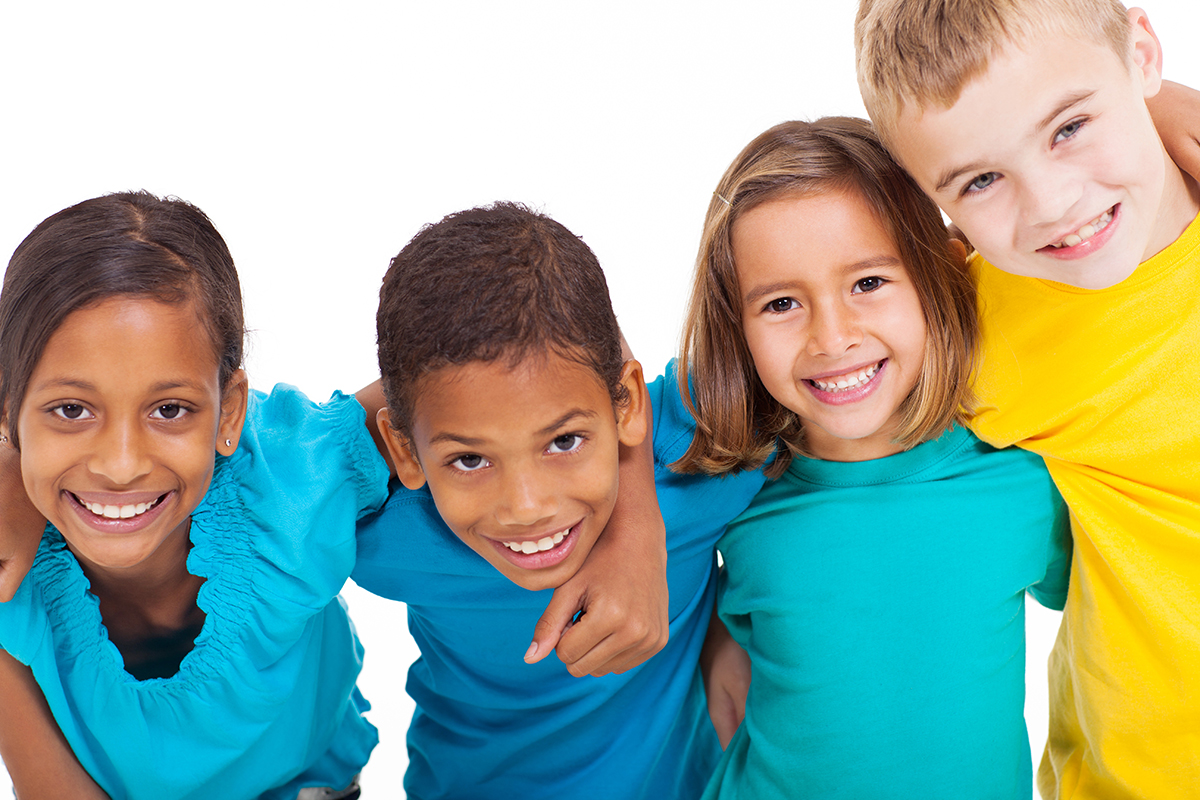
- More classroom engagement.
- Higher academic achievement.
- Better communication skills.
- Lower likelihood of bullying.
- Less aggressive behaviors and emotional disorders.
- More positive relationships (Ditkowski, 2018).
Although humans are born with the ability to empathize, empathetic skills are learned through practice and modeling. But before we teach our youth these skills, we must understand the roadblocks to empathy:
- Empathy is fundamentally a mental (cognitive) task. The mental effort is particularly difficult if we are connecting with a person from a different background (Dohrenwend, 2018).
- A person might fear misreading another person’s emotion, and that fear of being wrong prevents them from making the effort to empathize (Cameron, et. al, 2019).
- Some might not be willing to do the work of empathy when the effort benefits another person more than themselves (Cameron, et. al, 2019).
- If we are only willing to empathize with those like us, empathy can create more polarization. A person might feel they are betraying their social group if they empathize with a person in another group (Lamberth, 2019).
- A person can become so overwhelmed with feelings of concern, they become frozen with emotion and unable to act (Making Caring Common, 2018).
Once we understand and address the roadblocks, we can begin to explore how to best teach and model empathy for young people. Although humans are born with an aptitude for empathy, empathetic skills are learned through practice and modeling. Empathy requires four tasks: self-awareness, self-regulation, emotion-sharing, and a drive to act.
Self-awareness
A person must understand the roots of their emotional reactions and what in the other person’s story is prompting those reactions. This is critical because the empathetic listener must separate their own experience before making a response. Dohrenwend (2018) explains “Rigorous self-reflection is necessary because feelings and thoughts that are left unacknowledged or unaccepted will be the same feelings and thoughts that inhibit or contaminate empathetic reasoning.” For instance, if the listener is being told a story about a difficult diagnosis, and the listener perceives the person’s behavior caused the illness, they might devalue the person’s emotions.
A person who recognizes and properly labels their own emotions will be better able to read another person’s emotions. Additionally, if a person understands how their emotions impact their thinking, empathy will be more attainable. “The more connected you are to your own emotions, the greater your ability to feel for others” (“6 Things”, 2017). Educators and parents can teach their youth to recognize and label their emotions, rather than just reacting to them. This could be done through role-play or journaling in which students are asked to identify feelings as they are happening.
Self-regulation
Empathy is both an unconscious process and a process of cognitive control. The cognitive control helps us not to be so overcome by emotion that we are unable to help. Harvard conducted studies showed that people who employed “systematic thinking,” or cognitive control, were better at reading other people and giving empathetic responses than those who relied on emotional intuition alone (Streep, 2017). Learning to self-regulate emotions has an underlying benefit: self-regulation builds resiliency (Gunn, 2018). Adults can help youth process their reactions, reflecting on what emotions prompted the behavior. For instance, if a student continued to tease another student after they were told to stop, the adult can ask questions such as “What were you feeling when you teased your classmate?” and “How do you think that made him feel?” (Gunn, 2018). Walking the student through the process of self-reflection will help them identify their feelings and increase the capacity for empathy.
Emotion-sharing
If empathy was only the ability to recognize and understand feelings, then advertisers would be the epitome of empathy. Empathy goes beyond simply recognizing and understanding someone’s feelings to care and value the other person. Empathy “involves identifying with what someone is feeling, and additionally, actually feeling yourself” (“6 Things”, 2017). The shared emotion may even create a physical sensation in the listener, as our feelings begin to mirror the other person’s. Emotion sharing can also be modeled. Children pick up on body language and verbal cues in adult conversations. If youth repeatedly see adults being dismissive of other people’s feelings or mocking those of another social group, those behaviors will be internalized as permissible. On the other hand, parents who model active listening and helpful responsive behaviors will more likely have children who do the same.
Call to action
Young people, in particular, might feel empathy for a peer, but not know how to act on those feelings. It can be scary to act on empathetic feelings especially in a bullying situation or a mental health crisis. Parents and educators also should be sensitive to how stereotypes, popularity, and other power imbalances affect a youth’s decision to act on empathy. Under these difficult circumstances, youth should be encouraged to seek out a trusted adult and not handle the situation alone.
Ditkowsky (2018) explains how educators can promote positive action in difficult situations: “Educators can help young people overcome this gap [empathy-action gap] by modeling and encouraging them to take action, whether it’s standing up for someone who is teased, helping to solve a problem, or simply listening to someone who is feeling down.” A call to action requires us to move from being a bystander, a person who watches but does nothing, to an upstander, a person who assists and comforts the person in crisis. Empathy demands courage and inner strength, and for a more peaceful and thriving society, it’s worth the effort.
Works Cited
6 Things You Need to Know About Empathy. (2017, January 23). Retrieved from https://www.psychologytoday.com/us/blog/tech-support/201701/6-things-you-need-know-about-empathy.
Cameron, C. D., Hutcherson, C. A., Ferguson, A. M., Scheffer, J. A., Hadjiandreou, E., & Inzlicht, M. (2019). Empathy is hard work: People choose to avoid empathy because of its cognitive costs. Journal of Experimental Psychology: General, 148(6), 962-976. http://dx.doi.org/10.1037/xge0000595.
Ditkowsky, A. (2018, November 1). For Educators: How to Build Empathy and Strengthen Your School Community. Retrieved from https://mcc.gse.harvard.edu/resources-for-educators/how-build-empathy-strengthen-school-community.
Dohrenwend, A. M. (2018, December). Defining Empathy to Better Teach, Measure, and Understand Its Impact. Retrieved from https://www.ncbi.nlm.nih.gov/pubmed/30134271.
Gunn, J. (2019, June 15). Teaching Children Empathy Using Social-Emotional Learning Theory. Retrieved from https://education.cu-portland.edu/blog/classroom-resources/teaching-children-empathy-sel/.
Lambert, J. (2019, April 12). Does Empathy Have A Dark Side? Retrieved from https://www.npr.org/sections/health-shots/2019/04/12/712682406/does-empathy-have-a-dark-side.
Featured Poe Program: Bullying Uncovered: What Parents & Adults Need to Know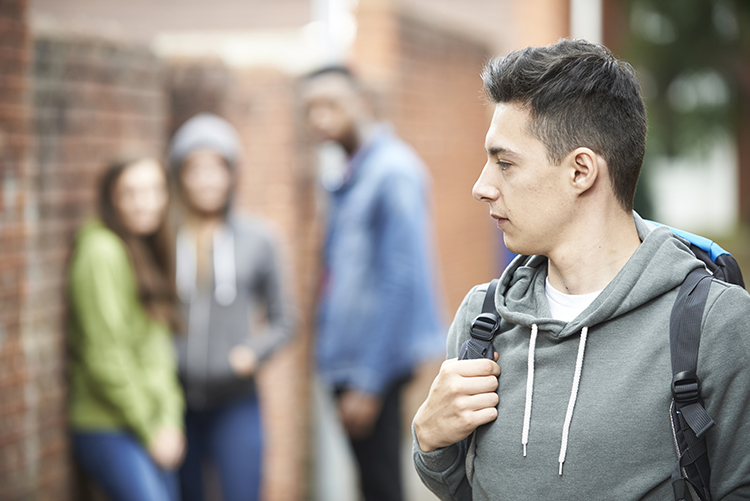
Grade Level: Adults | Program Length: 90 minutes
Bullying Uncovered is a 90-minute interactive program for adults who interact with youth. The program explores bullying definitions, statistics, and trends, including cyberbullying. Through small group activities, participants will learn how positive adult modeling and school climate impact bullying prevention.
Featured Crio Lesson: Bullies, Bystanders, and You
Grade Level: 9th-12th grade | Program Length: 15-45 min
The Poe Center has partnered with SAS through Curriculum Pathways to provide online access to health science and health education lessons at no cost to teachers across the State of North Carolina. Designed to complement its health education curriculum, the Poe Center’s programs and online content are aligned with the North Carolina Department of Public Instruction’s Healthful Living and Science Essential Standards.
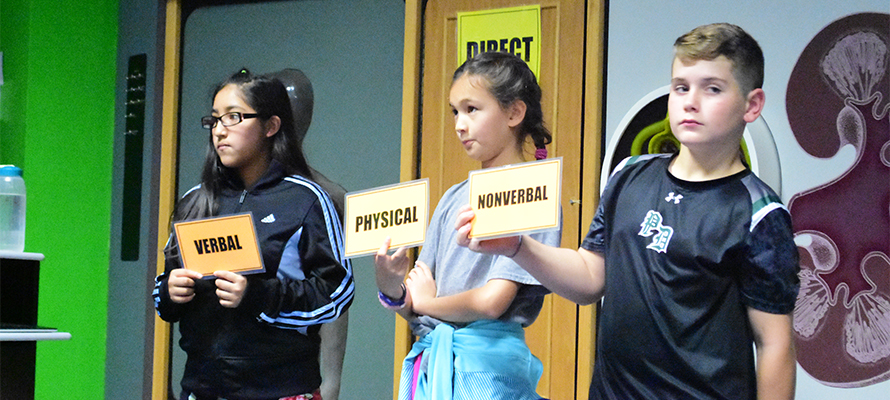
This lesson is geared for high school students to help them recognize and understand what a healthy relationship looks like versus an unhealthy relationship.
This lesson is aligned with NC Healthful Living Essential Standards: 8.ICR.1.1 8.ICR.1.2 8.ICR.1.4 8.ICR.1.6 9.ICR.1.4 9.ICR.1.5 9.ICR.3.2

